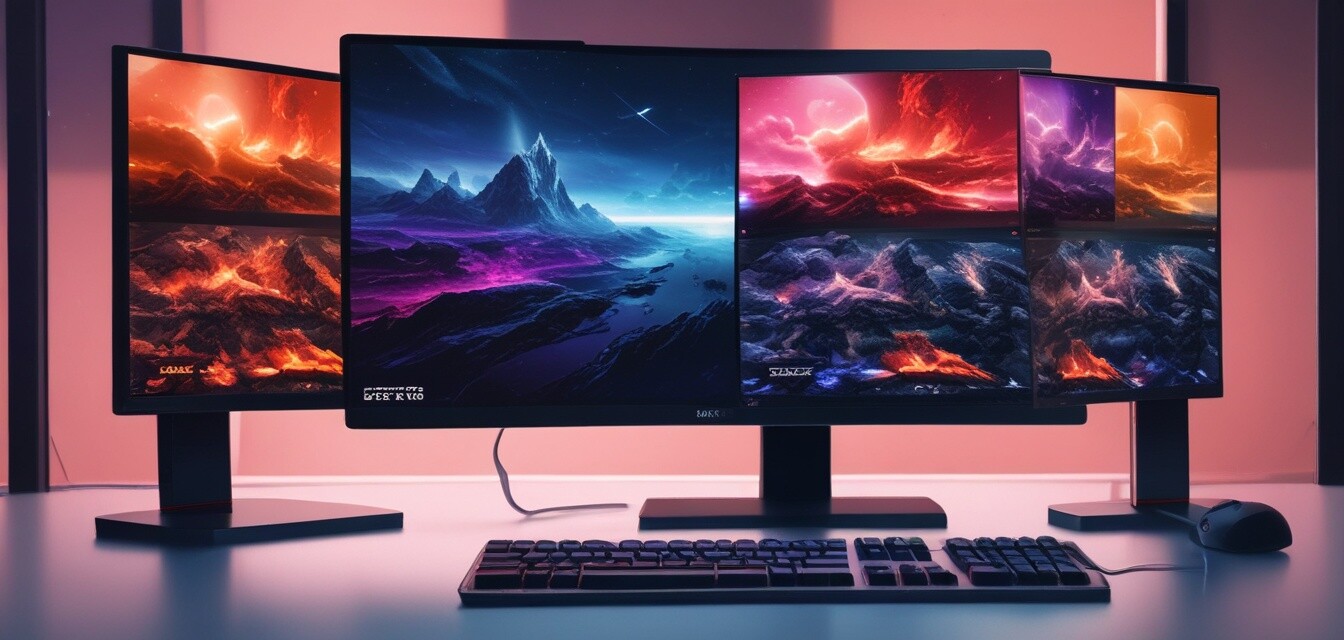
Comparing the Top Choices for Ultra-Fast Refresh Rates in OLED Monitors
Key Takeaways
- Ultra-fast refresh rates enhance gaming performance and response times.
- Diverse models offer varying resolutions, refresh rates, and features.
- Consider key factors like input lag, color accuracy, and adaptive sync technology.
- Regularly updating drivers optimizes performance.
- Take advantage of detailed product comparisons to make informed decisions.
As gaming technology continues to evolve, players are seeking monitors that provide the best visual experiences while staying competitive. This article delves into the world of OLED monitors with ultra-fast refresh rates, ideal for high-paced gaming scenarios. We'll explore various aspects such as response times, color accuracy, and suitable gaming features to help you make the right choice for your gaming setup.
Understanding Refresh Rates
Refresh rate refers to how many times per second your monitor updates the image it displays, measured in hertz (Hz). For gaming, higher refresh rates (typically above 60Hz) mean smoother motion and reduced blurring. This is particularly important for fast-paced action games.
Why Choose an OLED Monitor?
OLED monitors utilize organic light-emitting diodes to create incredible images with vibrant colors and deep blacks. Here are some of their standout features:
- Superior color accuracy
- Better contrast ratios
- Faster response times compared to traditional LED monitors
- Wide viewing angles
Top Features to Consider
When comparing OLED monitors with ultra-fast refresh rates, consider the following features:
| Feature | Description |
|---|---|
| Refresh Rate | Higher refresh rates (120Hz, 240Hz) provide smoother visuals. |
| Response Time | Single-digit response times reduce motion blur and ghosting. |
| Color Accuracy | Look for monitors that cover a wide color gamut. |
| Adaptive Sync Technology | Technologies like G-Sync and FreeSync reduce tearing and stuttering. |
Comparing Leading OLED Monitor Models
To facilitate your decision-making process, we've compiled a comparison table of popular OLED monitors known for their ultra-fast refresh rates:
| Model | Refresh Rate | Resolution | Response Time | Adaptive Sync |
|---|---|---|---|---|
| Model A | 240Hz | 4K | 1 ms | G-Sync |
| Model B | 120Hz | 1440p | 0.5 ms | FreeSync |
| Model C | 144Hz | 1080p | 1 ms | G-Sync & FreeSync |
| Model D | 240Hz | 4K | 0.5 ms | None |
Performance Analysis
Performance can vary significantly between models. Here are some critical aspects to evaluate:
- Input Lag: The delay between input and on-screen response, preferably under 10 ms.
- Brightness: Higher brightness can enhance visibility in bright environments.
- Connectivity: Ensure the monitor has the necessary ports for your gaming system.
Tips for Choosing the Right Monitor for Gaming
Beginners Section
If you're new to gaming monitors, consider these tips:
- Assess your budget before exploring options.
- Research gaming-specific features that matter to you.
- Read reviews and user feedback to understand real-world performance.
- Try out monitors whenever possible to get a feel for their responsiveness and picture quality.
Conclusion
Choosing the right OLED monitor with an ultra-fast refresh rate is crucial for an immersive gaming experience. By understanding the various features and comparing different models, you can find a monitor that suits your gaming needs perfectly. With the right information and insights, you can take your gaming to the next level. For further guidance, you can explore more detailed buying guides or deep dive into our 4K OLED gaming monitors.
Pros
- Excellent picture quality with vibrant colors.
- Ultra-fast refresh rates enhance gaming experiences.
- Wide viewing angles provide flexibility in setup.
- Low response times reduce motion blur.
Cons
- Typically more expensive than LED alternatives.
- Potential for burn-in with static images.
- Limited options for certain connectivity features.